
Contact |
Site
map |
Français |
Inuktitut |
|||||
 |
||||||||
| Research Programs | ||||||||
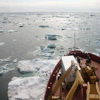 |
The central hypothesis in CASES (Canada Arctic Shelf Exchange Study) concerns the processing of organic matter in the Mackenzie delta versus offshore waters and its relationships with sea ice conditions. Micro-organisms are likely to contribute substantially to the biological carbon stocks across this region, and to play a leading role in the biogeochemical fluxes of organic matter. The microbial ecology subprogram was therefore formulated to measure microbial community structure and production dynamics throughout the CASES study region. |
|||||||||||||
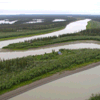 |
The Arctic River Delta Experiment is an independently funded, satellite program of CASES (Canada Arctic Shelf Exchange Study) designed to extend offshore measurements from CCGS Amundsen into the Mackenzie River, freshwater-saltwater transition zone and delta. The overarching objectives of ARDEX are to evaluate the properties of dissolved organic matter (DOM) in the river and coastal waters, and the photochemical, geochemical and biological processes regulating DOM dynamics. |
||||||||||
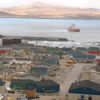 |
is one of the 4 themes in the NCE (Networks of Centers of Excellence) funded project ArcticNet. It is building on an existing set of environmental observation sites on land with the aim of developing an integrated network of coastal observatories throughout the eastern Canadian Arctic. Northern RiSCC is a network studying climate, terrestrial and freshwater ecosystems, human health and coastal communities in the changing Arctic. The geographic focus of the research is on eastern Canada, over 30 degrees of latitude (53 to 83°N). It lies across vegetation zones ranging from forest to shrub tundra to high arctic polar desert and spans a broad range of temperature regimes, from a mean annual temperature of 2°C (Kuujjuarapik) to 20°C at Ward Hunt Island, northern Ellesmere. |
||||||
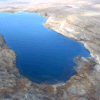 |
HIGH ARCTIC ECOSYSTEMS Canada's only ice shelves are found along the northern coast of Ellesmere Island. These thick (20 to 50m) expanses of ice were recently shown to harbour unique ecosystems of diverse microscopic organisms living within meltwater ponds and holes. However, little is known about the environment in which these microbial communities live. The research goals of this project include characterizing the ice shelf habitat in terms of water chemistry, biomass, thermal/light regime, plus determine the ability of ice shelf communities to metabolize under a variety of conditions. In turn, this will allow an estimate of the biological productivity of the ice shelf ecosystem and will provide insights into the capacity of the communities to cope with environmental change. |
||
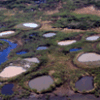 |
TUNDRA PONDS The Arctic tundra is spotted by thousands of shallow lakes and ponds. Unlike water bodies to the south, the life is mainly confined to the bottom of the water body rather than the water column. The high transparency of arctic waters, i.e. light can penetrate to the bottom, allows microscopic algae to grow on the sediment and form thick mat-like structures. The goal in this project is to study the linkages between the pelagic zooplankton and benthic communities, and address the central hypothesis that microbial mats contribute significantly to the production and species-specific biological structure in northern freshwater ecosystems. In addition UV protection strategies of zooplankton are studied. Zooplankton protect themselves from the harmful ultraviolet radiation by creating pigments that act as sunscreens. These can be measured in the living organisms and, potentially, from the fossil remains found in the bottom sediments of the water body, providing an indicator of past UV conditions. |
|